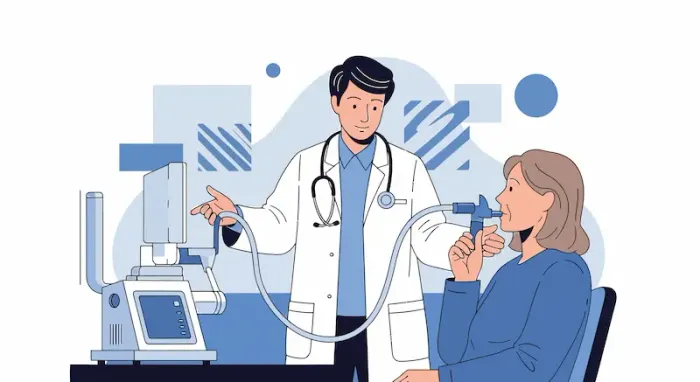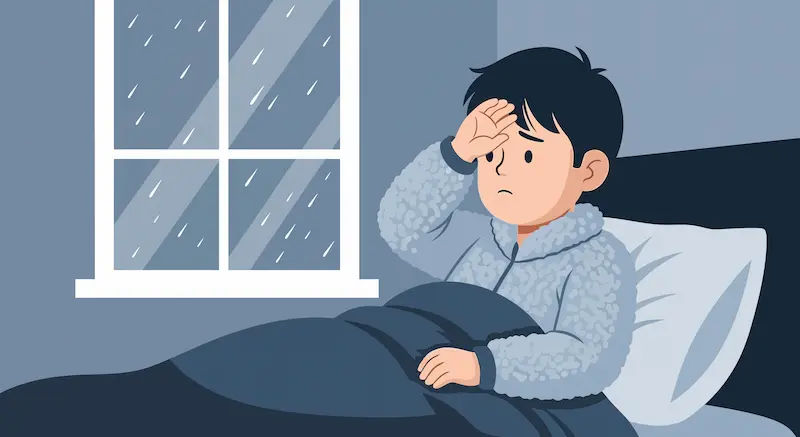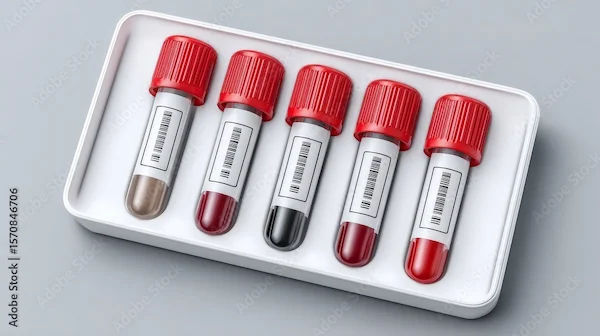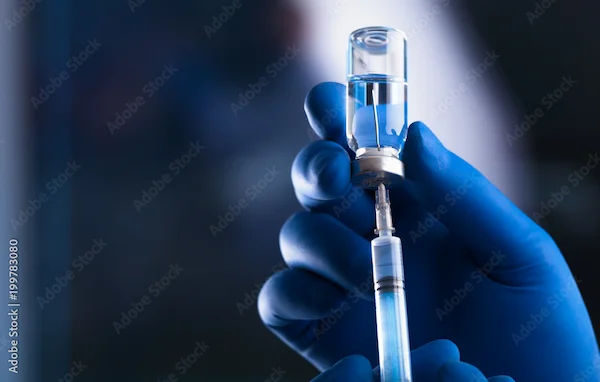Pulmonology: Your Complete Guide to Better Breathing
Know about the pulmonolgy, what it is, why is it needed, common ailments, symptoms, diagnosis, treatment options and more.


Introduction
If you’ve been dealing with a nagging cough, breathlessness on the stairs, wheezing, or frequent chest infections, a specialist in pulmonology can help you get to the bottom of it. Pulmonology is the medical speciality focused on the lungs and the entire respiratory system from your windpipe and airways to the delicate air sacs that exchange oxygen every second. In this clear, step-by-step guide to pulmonology, you’ll learn what pulmonologists do, when to see one, the most common conditions they treat, what to expect during testing, and the full range of treatments from inhalers and oxygen to pulmonary rehabilitation and minimally invasive procedures. You’ll also find practical tips for day-to-day breathing, guidance on air quality and prevention, and how to choose the right doctor.
What Is Pulmonology and What Does a Pulmonologist Do?
Pulmonology is the branch of medicine that diagnoses, treats, and helps prevent diseases of the lungs and respiratory tract. A pulmonologist is a physician with advanced training in conditions like asthma, COPD, interstitial lung diseases (ILD), pulmonary infections (including tuberculosis), sleep-disordered breathing, pulmonary hypertension, and lung cancer. They also manage complex cases in critical care units and collaborate closely with cardiology, allergy/immunology, oncology, and rehabilitation teams.
The scope of pulmonology in everyday health:
1. Evaluation of symptoms such as chronic cough, shortness of breath, chest tightness, snoring, and recurrent bronchitis.
2 . Optimization of daily functioning for people with asthma, COPD, or post-COVID breathlessness using medications, pulmonary rehabilitation, and lifestyle changes.
3. Preventive care including vaccines, smoking cessation, and air-quality guidance to reduce flare-ups and infections.
Subspecialties you may hear about:
Interventional pulmonology focuses on minimally invasive procedures such as bronchoscopy to biopsy lung nodules, remove airway blockages, or place valves in certain COPD cases.
Sleep medicine addresses conditions like obstructive sleep apnea, using tools like polysomnography (sleep studies) and CPAP therapy [8].
Critical care involves ventilator management and complex respiratory failure in intensive care settings.
When Should You See a Pulmonologist?
Breathing symptoms are easy to dismiss—until they interfere with daily life. Consider a pulmonology referral if you have:
1.Chronic cough lasting more than 8 weeks, or a cough with blood.
2.Shortness of breath that limits activity or worsens over time.
3.Wheezing, frequent chest infections, or repeated bouts of “bronchitis.”
4.Unrefreshing sleep with loud snoring and witnessed pauses in breathing.
5.Abnormal chest X-ray or CT scan findings.
6.A history of smoking or occupational exposures (dust, fumes) with new respiratory symptoms.
Urgent care vs. ER
1. Go to urgent care for mild to moderate symptoms like persistent cough or mild breathlessness without chest pain or low oxygen.
2. Go to the ER for severe shortness of breath, bluish lips, chest pain, confusion, high fever with shaking chills, or coughing up significant blood.
If symptoms persist beyond two weeks, consult a doctor online with Apollo24|7 for further evaluation. If your condition does not improve after trying initial measures, book a physical visit to a doctor with Apollo24|7.
How primary care and pulmonology work together
Primary care clinicians often start the workup with a chest exam and spirometry. When symptoms are complex or persistent, pulmonology adds specialized testing and tailored therapies.
Common Conditions Treated in Pulmonology
Asthma vs. COPD: key differences
1. Asthma often starts earlier in life, features variable symptoms and triggers (allergens, exercise), and improves with inhaled corticosteroids and bronchodilators.
2. COPD typically appears later, especially in smokers or those with biomass exposure; symptoms are more fixed and progressive, with chronic bronchitis or emphysema patterns; management follows GOLD recommendations.
3. Worldwide, COPD is the third leading cause of death, underscoring the importance of early diagnosis and consistent care. Asthma affects hundreds of millions globally, yet many people remain under-treated due to incorrect inhaler technique or skipped preventer medication.
Sleep apnea and snoring
Obstructive sleep apnea causes repeated airway collapse during sleep. It’s linked to daytime sleepiness, high blood pressure, and heart risks. Diagnosis involves a sleep study; treatment includes CPAP, dental devices, weight management, and positional therapy.
Infections, TB, bronchiectasis, and ILD
• Recurrent infections or persistent cough may signal bronchiectasis—damaged, widened airways prone to mucus buildup and infections.
• Tuberculosis requires specific antibiotics over months and close follow-up, often coordinated with public health services and pulmonology.
• Interstitial lung diseases (e.g., pulmonary fibrosis) cause scarring and reduced oxygen transfer; early evaluation and management can preserve lung function.
Lung cancer and pulmonary hypertension
Lung cancer detection has improved with low-dose CT (LDCT) screening in high-risk adults, which reduces lung cancer deaths compared with chest X-ray [6].
Pulmonary hypertension involves elevated blood pressure in lung arteries; symptoms include breathlessness and fatigue, requiring specialized testing and targeted therapies.
How Pulmonologists Diagnose Lung Problems?
What your first visit includes:
1. Detailed history: symptom timeline, triggers, smoking and occupational exposures, travel, infections, medications, allergies, and family history.
2. Physical exam: breathing sounds, oxygen levels, swelling of legs, clubbing of fingers, and signs of allergic disease.
3. Baseline tests ordered by pulmonology may include spirometry, chest imaging, and labs [5].
Pulmonary function tests and imaging
1. Spirometry measures how much and how fast you can exhale, helping distinguish asthma from COPD. Diffusing capacity (DLCO) assesses oxygen transfer useful in emphysema or ILD.
2 . Peak flow monitoring at home can track asthma control day-to-day.
3. Chest X-ray is a quick first look; CT scans detail nodules, fibrosis, or bronchiectasis.
4 . Sleep study (polysomnography) diagnoses sleep apnea; home sleep testing may be an option for selected patients.
Labs and specialized studies
1. Arterial blood gases (ABG) evaluate oxygen and carbon dioxide, especially in severe disease or during flare-ups.
2 . Sputum tests help target antibiotics for infections; TB testing may be needed based on risks.
3. Allergy testing and blood markers (eosinophils, IgE) refine asthma phenotypes; Apollo24|7 offers convenient home collection for tests like CBC, IgE, and even vitamin D or HbA1c when metabolic or bone health are part of the picture.
Treatments and Procedures in Pulmonology
Inhalers, oxygen, and pulmonary rehabilitation\
1. Inhaled therapies: Controller inhalers (inhaled corticosteroids, with or without long-acting bronchodilators) reduce airway inflammation; relievers act quickly for sudden symptoms. Proper technique can double the benefit—ask for a teach-back demo at every visit.
2. Oxygen therapy: For patients with low oxygen levels at rest or during activity, oxygen improves quality of life; modern portable concentrators increase independence.
3. Pulmonary rehabilitation: Structured exercise, breathing training, and education improve exercise tolerance and reduce hospitalizations in COPD and other chronic lung diseases.
Procedures: bronchoscopy and beyond
Bronchoscopy allows pulmonologists to look inside your airways, take biopsies, remove mucus plugs, place stents, or sample lymph nodes using ultrasound guidance (EBUS).
1. Pleural procedures drain fluid around the lungs and can prevent recurrence.
2. In selected COPD patients with severe emphysema, bronchoscopic lung volume reduction with valves may improve breathlessness and exercise capacity by reducing hyperinflation.
3. For suspicious nodules or interstitial lung disease, tissue diagnosis via bronchoscopy or surgical biopsy may be necessary.
Biologics, vaccines, and when surgery fits
1.Biologics (e.g., anti-IgE, anti-IL-5) for severe asthma can reduce exacerbations when standard therapy isn’t enough.
2.Vaccines (influenza, pneumococcal, COVID-19) reduce respiratory infections and flare-ups—an essential part of pulmonology care.
3.Surgery, including resection for early lung cancer, can be life-saving; screening detects cancers earlier when surgery is possible.
If your symptoms do not improve with initial treatments, book a physical visit to a doctor with Apollo24|7 for a comprehensive review and adjustments.
Living Better With Lung Disease: Lifestyle, Rehab, and Prevention
Breathing exercises and home routines
1. Pursed-lip breathing and diaphragmatic breathing help during activity or anxiety-driven breathlessness.
2. Airway clearance: For bronchiectasis, daily routines like huff coughing, oscillatory devices, and hydration reduce infections.
3. Pulmonary rehabilitation exercises at home: Interval walking, sit-to-stands, and resistance bands maintain gains between supervised sessions.
Choosing Care and Next Steps
1. How to select a pulmonologist
Look for board certification and experience with your condition (e.g., ILD clinic, severe asthma center, sleep medicine).
Consider access to services: pulmonary rehab, imaging, bronchoscopy, and multidisciplinary clinics.
Patient-centered communication: You should feel heard, with a clear plan and follow-up.
Conclusion
Breathing well shapes everything—from how far you can walk to how deeply you sleep. Pulmonology brings together precise diagnostics, effective treatments, and practical coaching so you can move from symptom-driven days to a more confident routine. If you’ve noticed persistent coughing, wheezing, or shortness of breath, don’t wait. Early evaluation can distinguish between asthma, COPD, infection, or other conditions and get you on the right path quickly. Equip yourself with a simple toolkit—action plan, inhaler technique check, air-quality awareness, and a plan for exercise and pulmonary rehabilitation—to protect your lungs day by day. And remember, support matters: partner with a pulmonologist you trust, ask for clear next steps, and set realistic goals you can achieve. If you need guidance now, consult a doctor online with Apollo24|7. If your condition doesn’t improve after trying these methods, book a physical visit to a doctor with Apollo24|7 for a comprehensive review. Your lungs work tirelessly for you—give them the expert attention they deserve and breathe easier, one step at a time.
More articles from General Medical Consultation
Frequently Asked Questions
1) What does a pulmonologist do?
pulmonologist specializes in diagnosing and treating diseases of the lungs and breathing passages—conditions like asthma, COPD, sleep apnea, infections, and ILD. They use tests such as spirometry, CT scans, and bronchoscopy to guide care [1][5].
2) When should I see a pulmonologist for chronic cough?
If a cough lasts more than 8 weeks, is worsening, or is accompanied by shortness of breath, wheezing, fever, or blood, schedule a pulmonology evaluation. If symptoms persist beyond two weeks, consult a doctor online with Apollo24|7.
3) What is a pulmonary function test and is spirometry enough?
Pulmonary function testing includes spirometry, lung volumes, and DLCO. Spirometry is a key first step, but your pulmonologist may add tests based on your symptoms and imaging results [5].
4) What is bronchoscopy and how long is recovery?
Bronchoscopy is a procedure in which a thin scope is guided into your airways to view them, collect samples, or perform treatments. Most people go home the same day; mild sore throat or cough can occur for 24–48 hours [1].
5) Who should consider lung cancer screening with low-dose CT?
Adults 50–80 years old with a significant smoking history (e.g., 20 pack-years) who currently smoke or quit within the past 15 years may be eligible. Talk to your clinician about benefits and risks; LDCT reduces lung cancer deaths compared with chest X-ray [6].


_0.webp)

